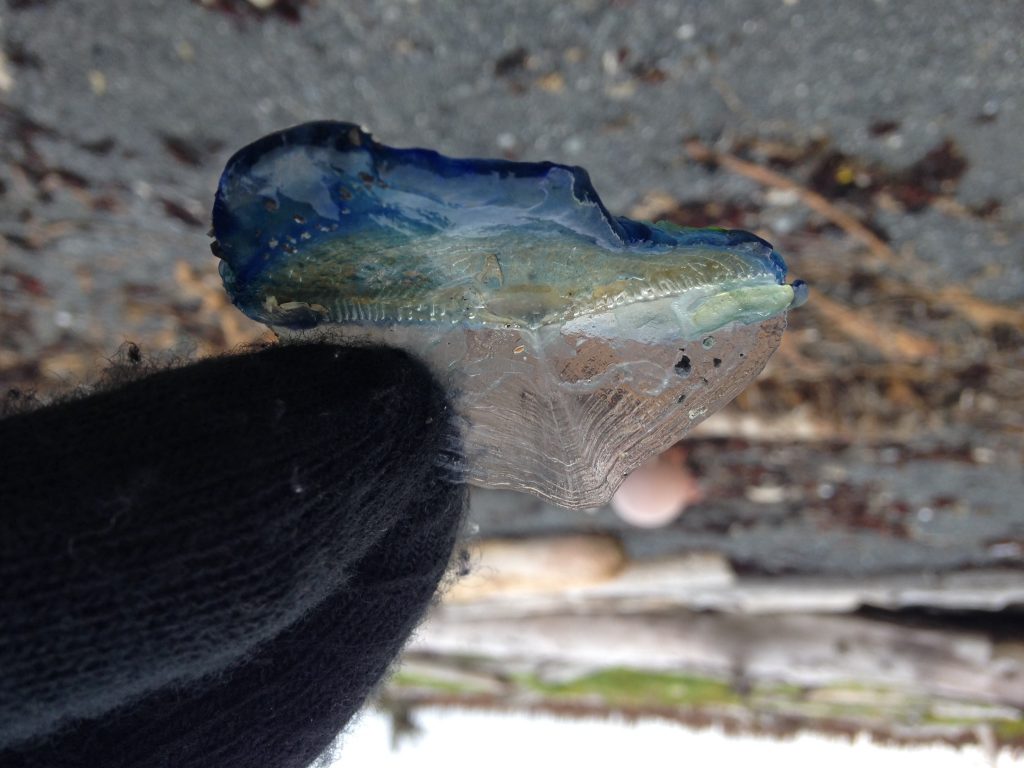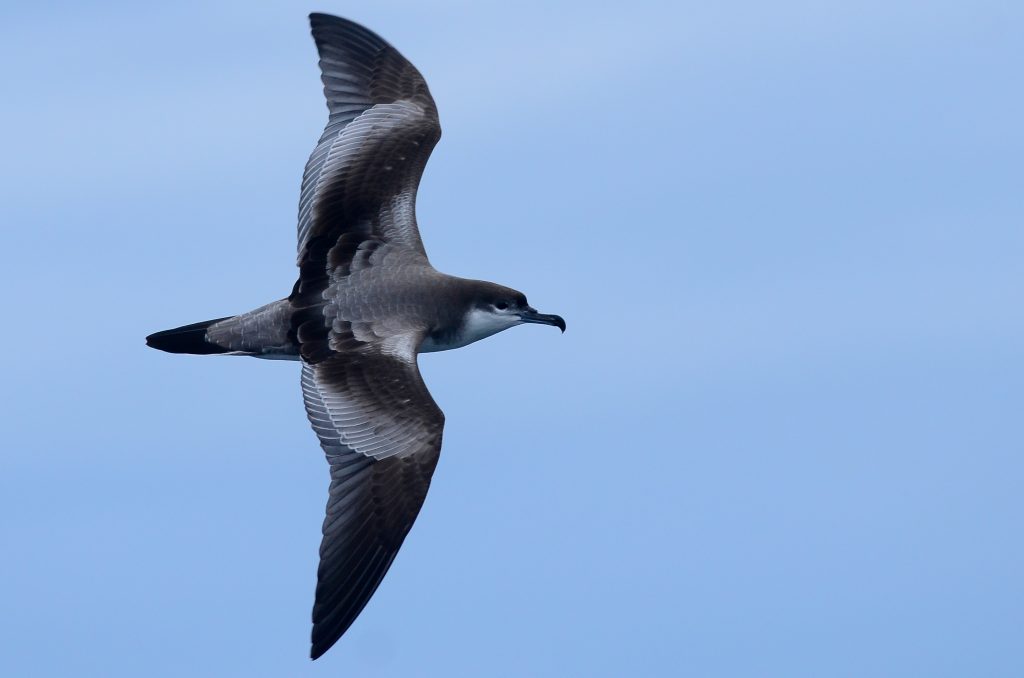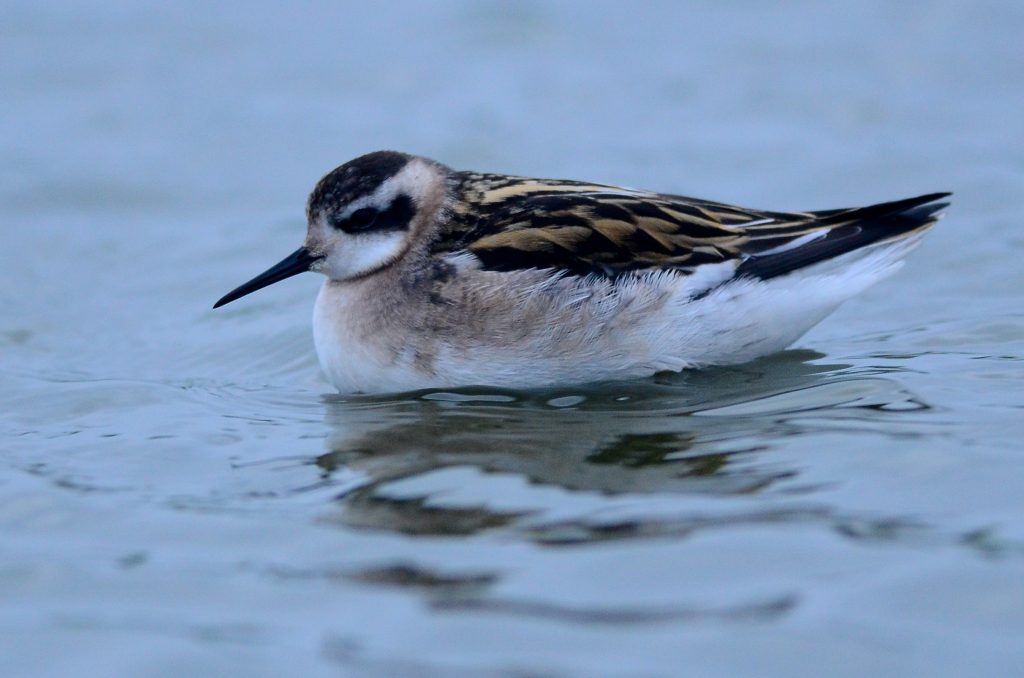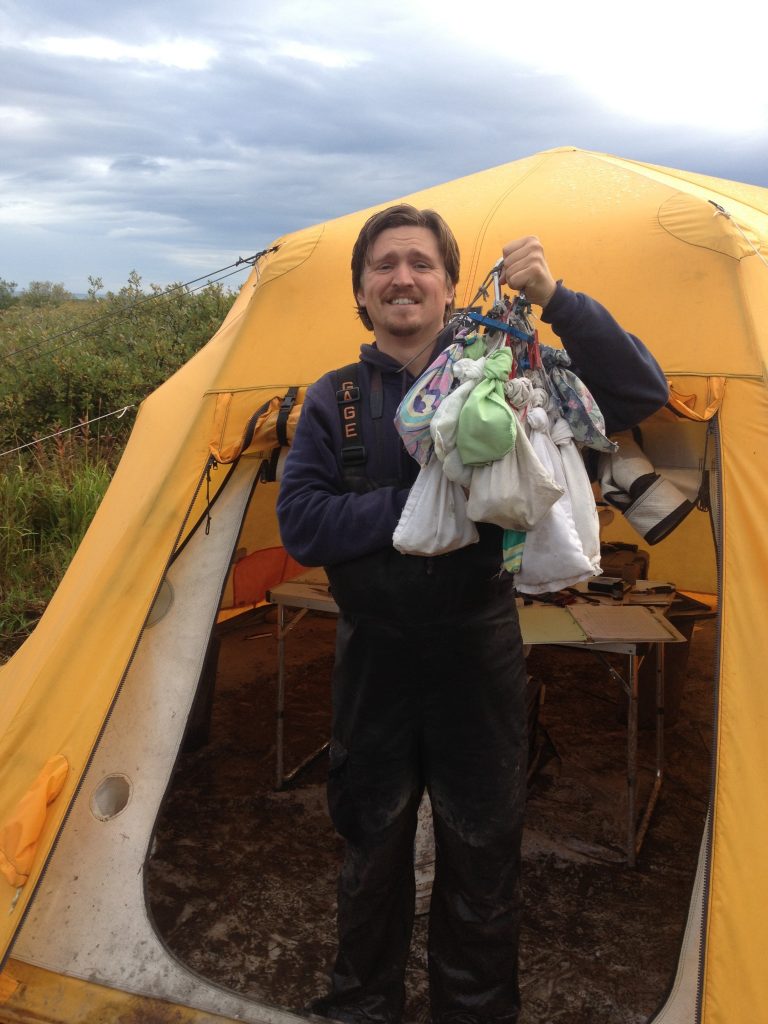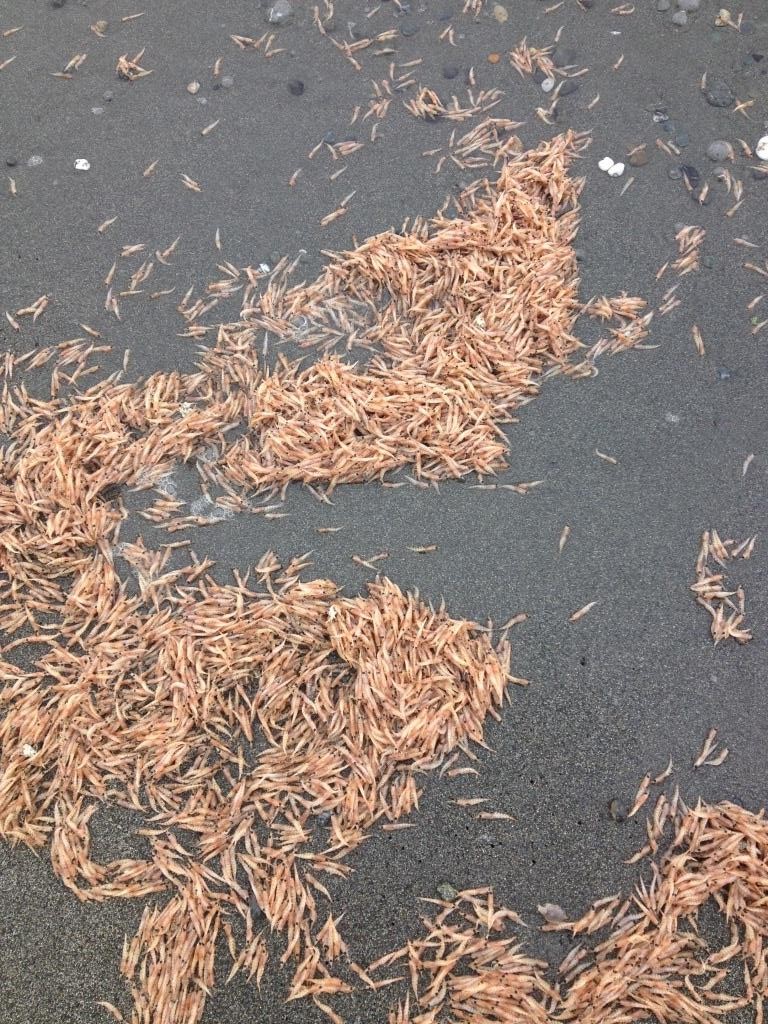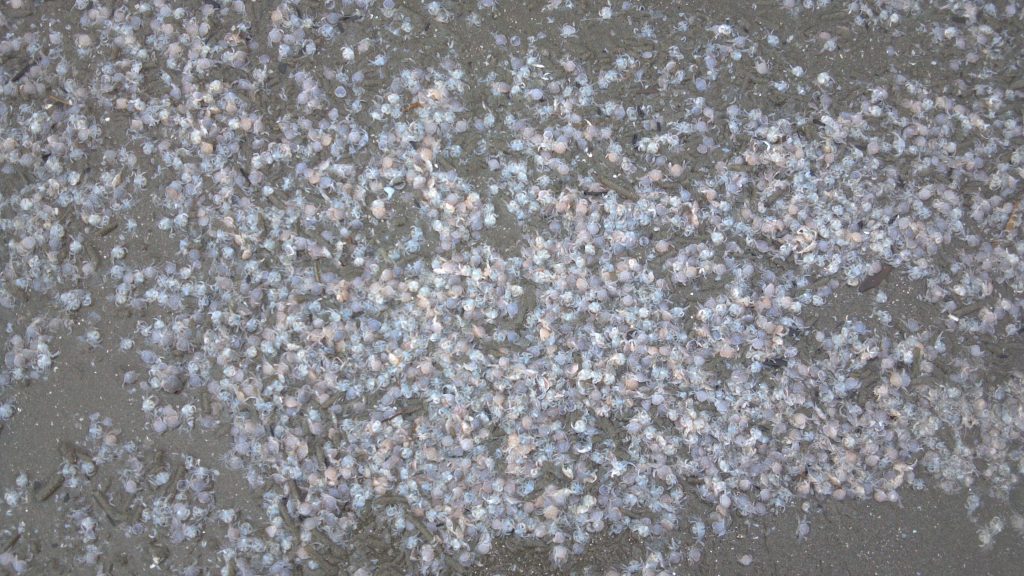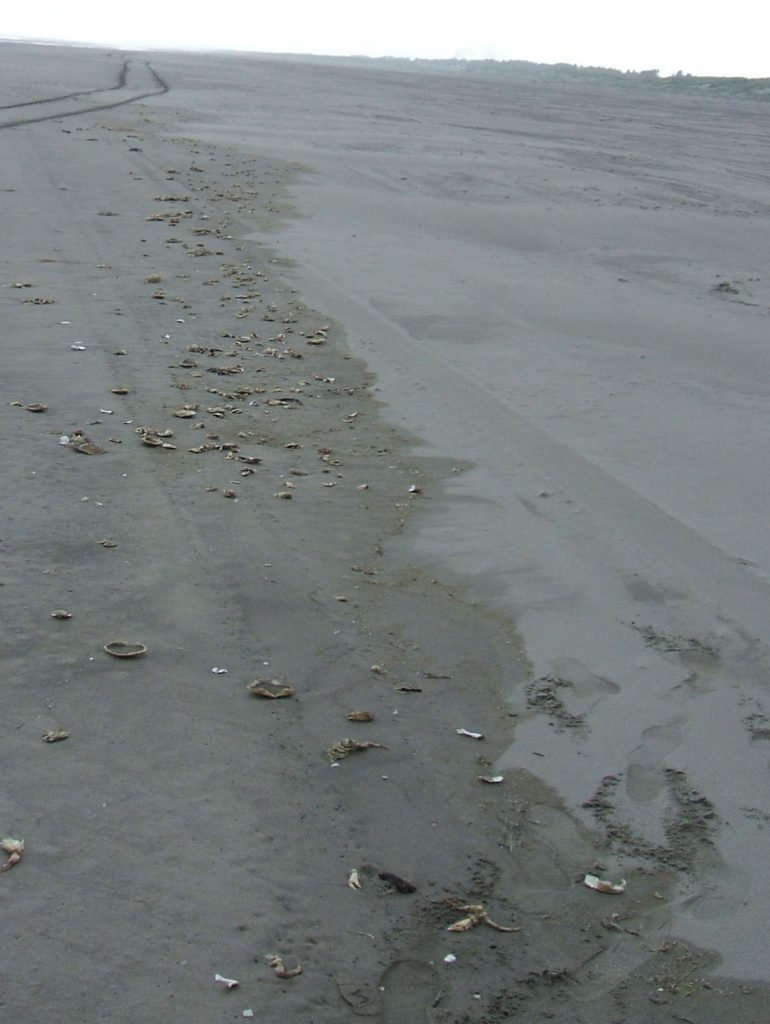As some of you know, Charlie takes a break from COASSTing each summer to do a little field work. This August, Charlie returned to Middleton Island for the fall field season and we just received his hand-written letter, which reads:
Hello COASSTers,
Here is a photo update. The weather has been unusually calm (and still) and there are signs of it being a warm water year. Beach finds include our first Velella velella and Cassin’s Auklet on the Island.
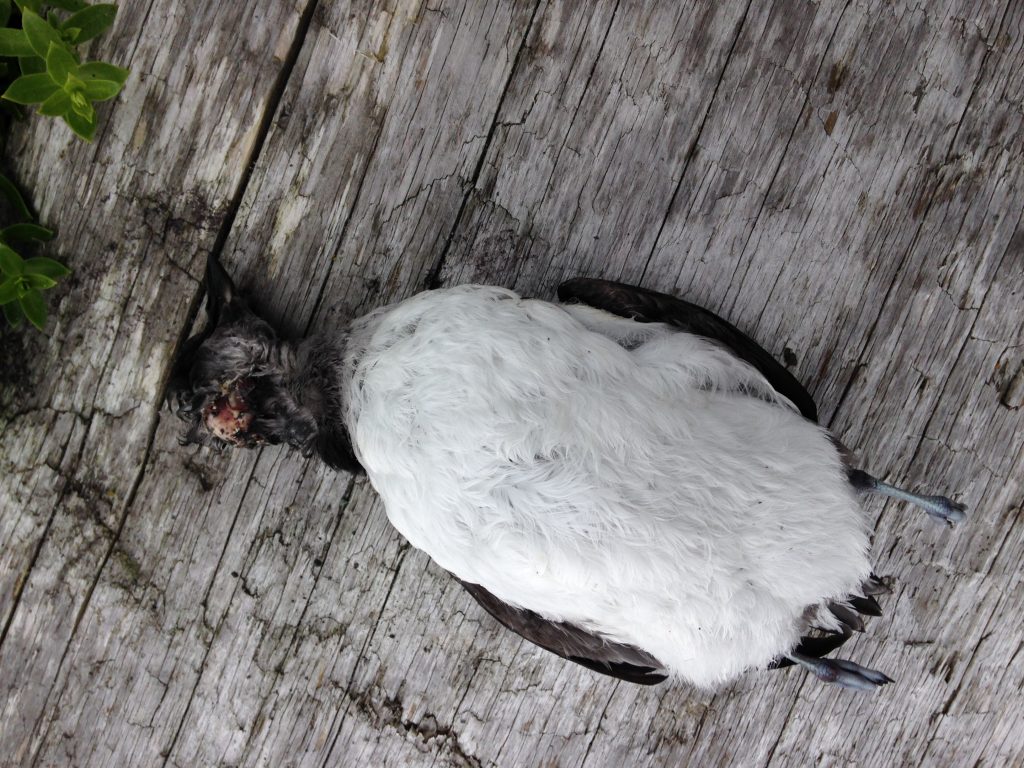
Cassin’s Auklet’s Auklet (COASST guide AL8-AL9 or AK: AL21-AL22) found on Middleton Island by Charlie. Note the short, stout bill with pale spot at base, and in fresh birds, blue-toned feet.
Also see the VERY COOL “armored” tarsus, toes and webbing of a Parasitic Jaeger.
Work days have been long and productive, and “days off” are spent doing much of the same thing.
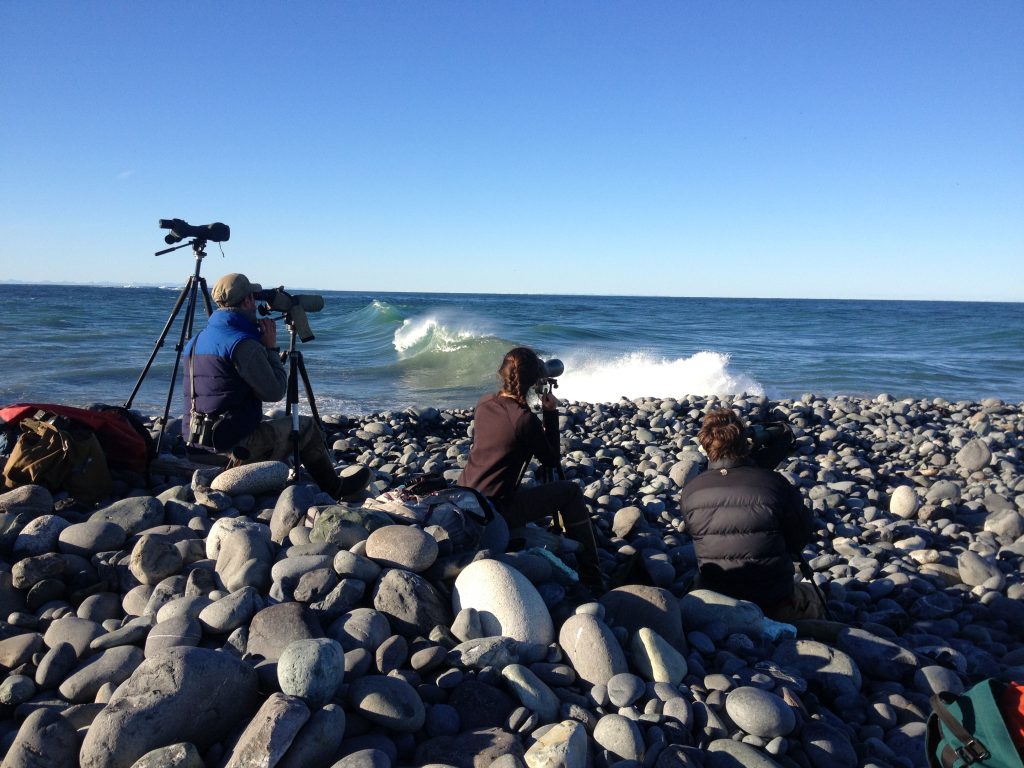
Charlie’s team, conducting shore-based surveys of pelagic birds. What are they seeing through those scopes? Look below!
Happy COASSTing!
Charlie

